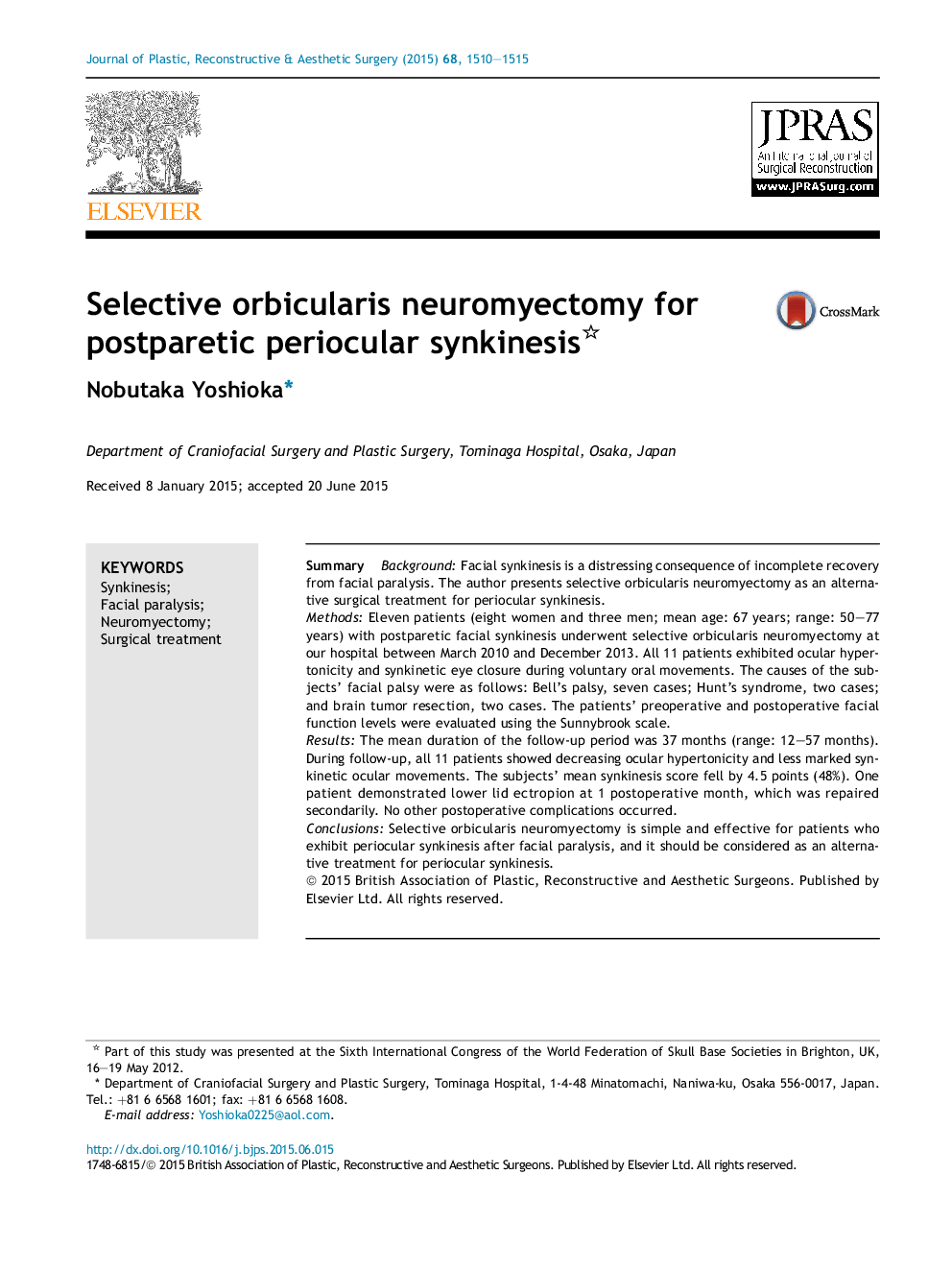| Article ID | Journal | Published Year | Pages | File Type |
|---|---|---|---|---|
| 4117049 | Journal of Plastic, Reconstructive & Aesthetic Surgery | 2015 | 6 Pages |
SummaryBackgroundFacial synkinesis is a distressing consequence of incomplete recovery from facial paralysis. The author presents selective orbicularis neuromyectomy as an alternative surgical treatment for periocular synkinesis.MethodsEleven patients (eight women and three men; mean age: 67 years; range: 50–77 years) with postparetic facial synkinesis underwent selective orbicularis neuromyectomy at our hospital between March 2010 and December 2013. All 11 patients exhibited ocular hypertonicity and synkinetic eye closure during voluntary oral movements. The causes of the subjects' facial palsy were as follows: Bell's palsy, seven cases; Hunt's syndrome, two cases; and brain tumor resection, two cases. The patients' preoperative and postoperative facial function levels were evaluated using the Sunnybrook scale.ResultsThe mean duration of the follow-up period was 37 months (range: 12–57 months). During follow-up, all 11 patients showed decreasing ocular hypertonicity and less marked synkinetic ocular movements. The subjects' mean synkinesis score fell by 4.5 points (48%). One patient demonstrated lower lid ectropion at 1 postoperative month, which was repaired secondarily. No other postoperative complications occurred.ConclusionsSelective orbicularis neuromyectomy is simple and effective for patients who exhibit periocular synkinesis after facial paralysis, and it should be considered as an alternative treatment for periocular synkinesis.
